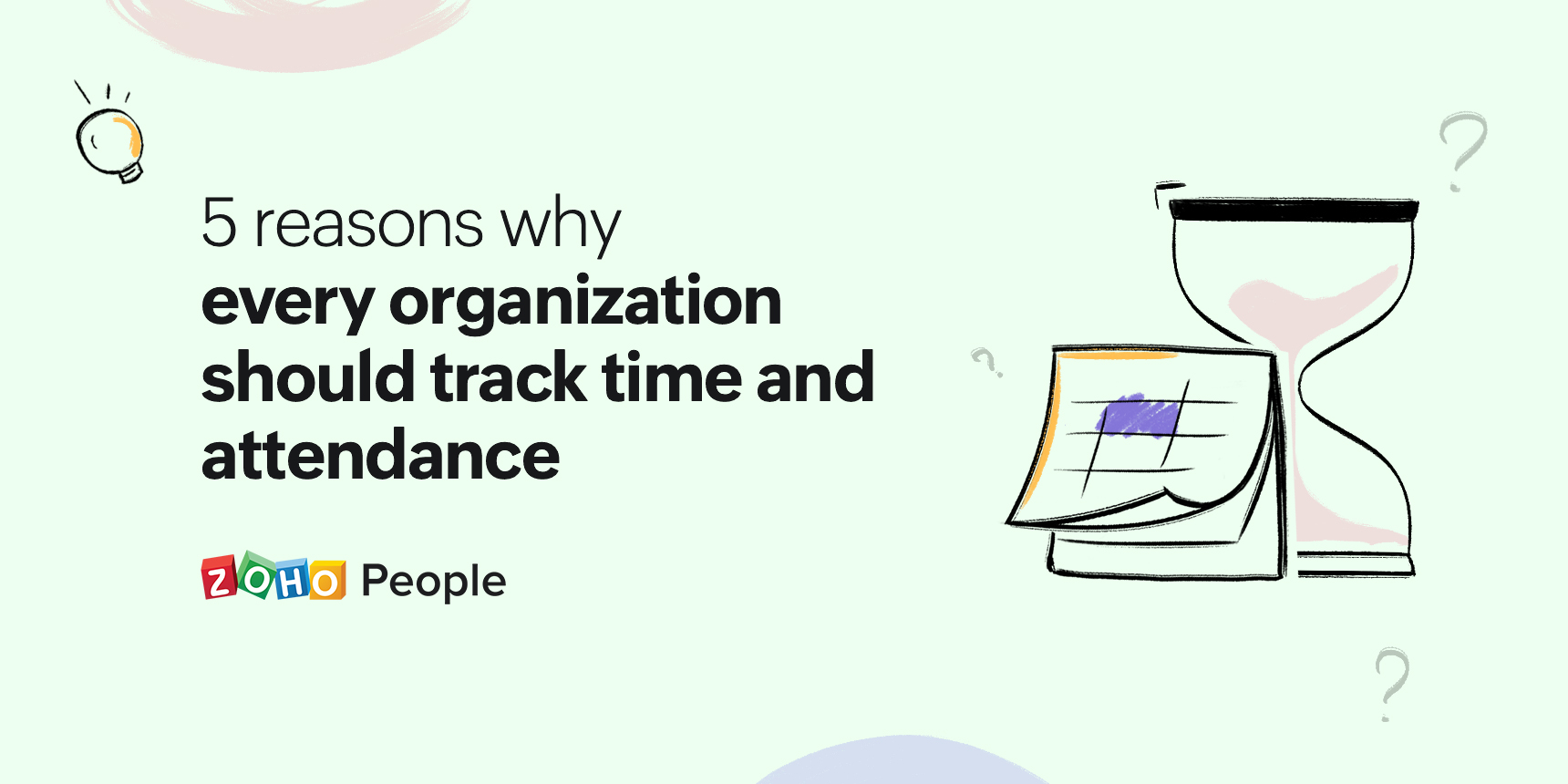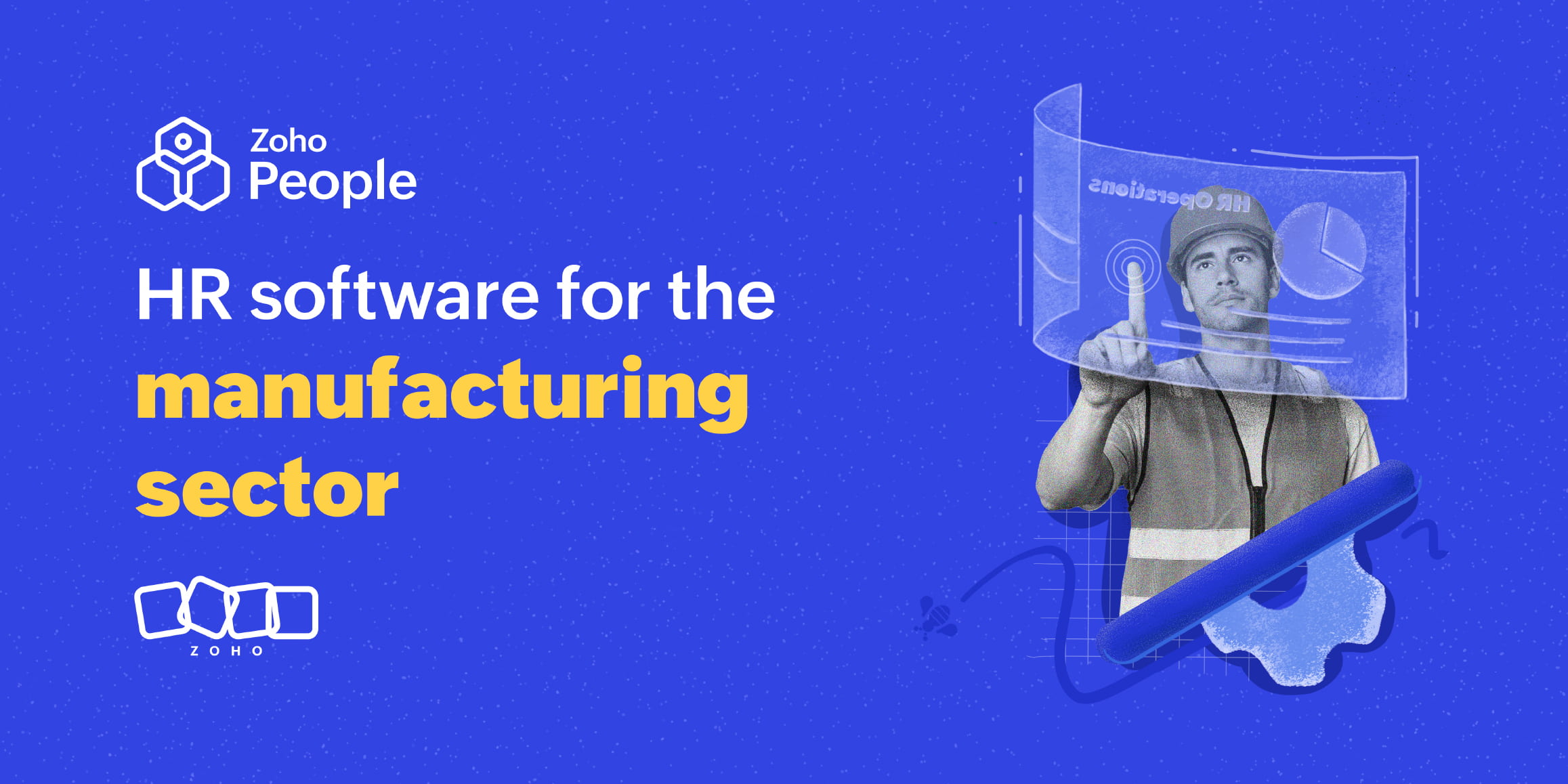- HOME
- More
- On Zoho People
- Why it's important to track employee time and attendance
Why it's important to track employee time and attendance
- Last Updated : August 23, 2023
- 4.6K Views
- 2 Min Read

Monitoring your workforce's time and attendance is crucial to improving business performance and productivity. Organizations that implement effective timekeeping strategies can help employees keep up with project goals and deadlines, enhance client satisfaction, and strengthen overall awareness of employee output.
Here are five compelling reasons why every organization should stay on top of employee time and attendance data:
1. Maintain timely payments
Payroll is a vital HR function, and it's important to prevent calculation errors by accurately tracking employee data. When you take the proper steps to keep payments timely and accurate, it helps build trust within your organization, saves you from costly compliance issues, and strengthens your employer brand.
2. Enhance employee productivity
Business productivity largely depends on how well you manage employee time and attendance. Proper timekeeping can help you track the expected duration of specific projects and identify aspects that may take up more time than usual. This allows you to mitigate potential challenges and optimize employee performance.
3. Improve project management
Tracking employee work hours enables project managers to stay on top of their team's workflow without constantly asking team members for updates. Team leads can divide each project into multiple tasks and assign them to employees so they can clock their time appropriately. This way, teams can complete project successfully without the risk of scheduling errors that lead to last-minute pressure. Similarly, documenting your workforce's leave and attendance data can help managers honor team member availability and reassign tasks as necessary. Recording the time spent on each project also ensures accurate customer invoices.
4. Gain insights on employee management
By analyzing time and attendance data, you can glean useful insights about your workforce and address potential issues. For instance, reviewing employee leave data could help you understand your organization's absenteeism rate. A higher absenteeism rate means lower employee morale, higher burnout, and an even higher employee turnover rate. Similarly, analyzing the timesheet data can help managers see if team members have equal and fair workloads. They can also use this data to protect employees from burnout. If you identify a visible difference between expected hours and logged hours, it could mean your employees require more training.
5. Strengthen your compliance with labor laws
Documenting employee hours enhances your organization's compliance with local and regional labor laws. By maintaining accurate data, you could also save your organization from potential lawsuits. This data can help you prove your organization's adherence to employee protection rights.
Tracking employee's time and attendance efficiently
Careful timekeeping can yield so many benefits for your workforce. While you can still choose to track hours manually with spreadsheets, many organizations find it's much more convenient and effective to adopt online time and attendance systems.
Zoho People, our HR software, brings time and attendance software systems together, allowing managers and employees to mark attendance and record time remotely. Our system can be customized to ensure compliance with your local and regional labor laws. Learn more about Zoho People's online time and attendance systems.
 Tarika
TarikaContent Specialist at Zoho People


